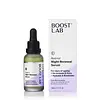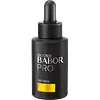What's inside
What's inside
 Key Ingredients
Key Ingredients

 Benefits
Benefits

 Concerns
Concerns

 Ingredients Side-by-side
Ingredients Side-by-side

Water
Skin ConditioningPropanediol
SolventCaprylic/Capric Triglyceride
MaskingAloe Barbadensis Leaf Juice
Skin ConditioningGlyceryl Citrate/Lactate/Linoleate/Oleate
EmulsifyingDimethyl Isosorbide
SolventGlycerin
HumectantRetinol
Skin ConditioningTocopheryl Acetate
AntioxidantHydroxypinacolone Retinoate
Skin ConditioningXanthan Gum
EmulsifyingBisabolol
MaskingPolysorbate 20
EmulsifyingTrisodium Ethylenediamine Disuccinate
Citric Acid
BufferingPhenoxyethanol
PreservativeEthylhexylglycerin
Skin ConditioningWater, Propanediol, Caprylic/Capric Triglyceride, Aloe Barbadensis Leaf Juice, Glyceryl Citrate/Lactate/Linoleate/Oleate, Dimethyl Isosorbide, Glycerin, Retinol, Tocopheryl Acetate, Hydroxypinacolone Retinoate, Xanthan Gum, Bisabolol, Polysorbate 20, Trisodium Ethylenediamine Disuccinate, Citric Acid, Phenoxyethanol, Ethylhexylglycerin
Water
Skin ConditioningDimethyl Isosorbide
SolventTocopherol
AntioxidantHelianthus Annuus Seed Oil
EmollientPhenoxyethanol
PreservativeHydroxypinacolone Retinoate
Skin ConditioningSodium Acrylate/Sodium Acryloyldimethyl Taurate Copolymer
Emulsion StabilisingAcrylates/C10-30 Alkyl Acrylate Crosspolymer
Emulsion StabilisingPolyisobutene
Ethylhexylglycerin
Skin ConditioningRetinyl Palmitate
Skin ConditioningDisodium EDTA
Sodium Hydroxide
BufferingCaprylyl/Capryl Glucoside
CleansingWater, Dimethyl Isosorbide, Tocopherol, Helianthus Annuus Seed Oil, Phenoxyethanol, Hydroxypinacolone Retinoate, Sodium Acrylate/Sodium Acryloyldimethyl Taurate Copolymer, Acrylates/C10-30 Alkyl Acrylate Crosspolymer, Polyisobutene, Ethylhexylglycerin, Retinyl Palmitate, Disodium EDTA, Sodium Hydroxide, Caprylyl/Capryl Glucoside
Ingredients Explained
These ingredients are found in both products.
Ingredients higher up in an ingredient list are typically present in a larger amount.
Dimethyl Isosorbide is a low-irritation solvent that helps deliver actives into your skin. It is created from glucose.
Research shows how well this ingredient works depends on the active and formulation rather than the concentration alone. This means adding more Dimethyl Isosorbide does not guarantee better penetration of ingredients into the skin.
Ethylhexylglycerin (we can't pronounce this either) is commonly used as a preservative and skin softener. It is derived from glyceryl.
You might see Ethylhexylglycerin often paired with other preservatives such as phenoxyethanol. Ethylhexylglycerin has been found to increase the effectiveness of these other preservatives.
This ingredient is a retinoid. It usually goes by a more common name: "Granactive".
Hydroxypinacolone Retinoate (HPR) belongs to the class of retinoids that also includes retinol and tretinoin.
Retinoids have been proven to:
So what is the difference between all the retinoids?
Most retinoids need to go through a conversion line to become effective on skin. The ending product is retinoic acid. Retinoic acid is AKA tretinoin.
HPR is an ester of tretinoin. Emerging studies suggest HPR to have an added benefit that other retinoids don't have: Low irritation.
A study from 2021 found HPR to have the greatest stability when exposed to light and temperature out of all the commercial retinoids.
A note about naming:
The name "Granactive" is the trade name and the name most commonly used on packages.
Granactive is the name of the mixture - about 90% solvent and 10% HPR. A product with 5% granactive has 0.5% HPR.
Learn more about Hydroxypinacolone RetinoatePhenoxyethanol is a preservative that has germicide, antimicrobial, and aromatic properties. Studies show that phenoxyethanol can prevent microbial growth. By itself, it has a scent that is similar to that of a rose.
It's often used in formulations along with Caprylyl Glycol to preserve the shelf life of products.
Water. It's the most common cosmetic ingredient of all. You'll usually see it at the top of ingredient lists, meaning that it makes up the largest part of the product.
So why is it so popular? Water most often acts as a solvent - this means that it helps dissolve other ingredients into the formulation.
You'll also recognize water as that liquid we all need to stay alive. If you see this, drink a glass of water. Stay hydrated!
Learn more about Water